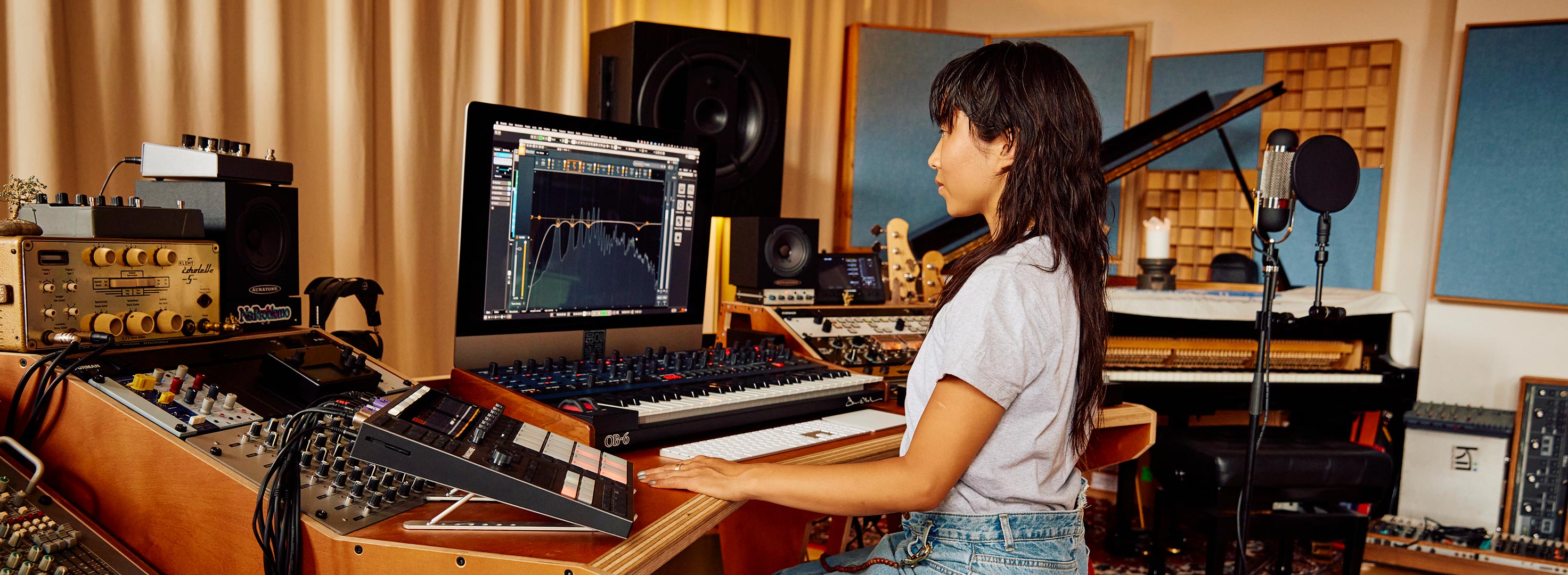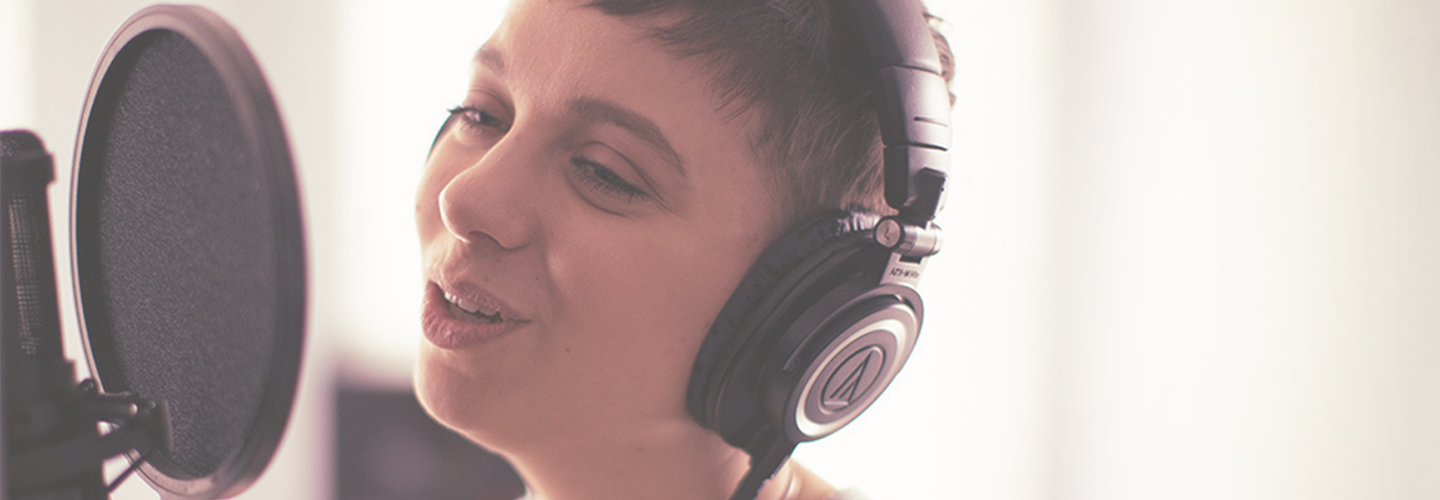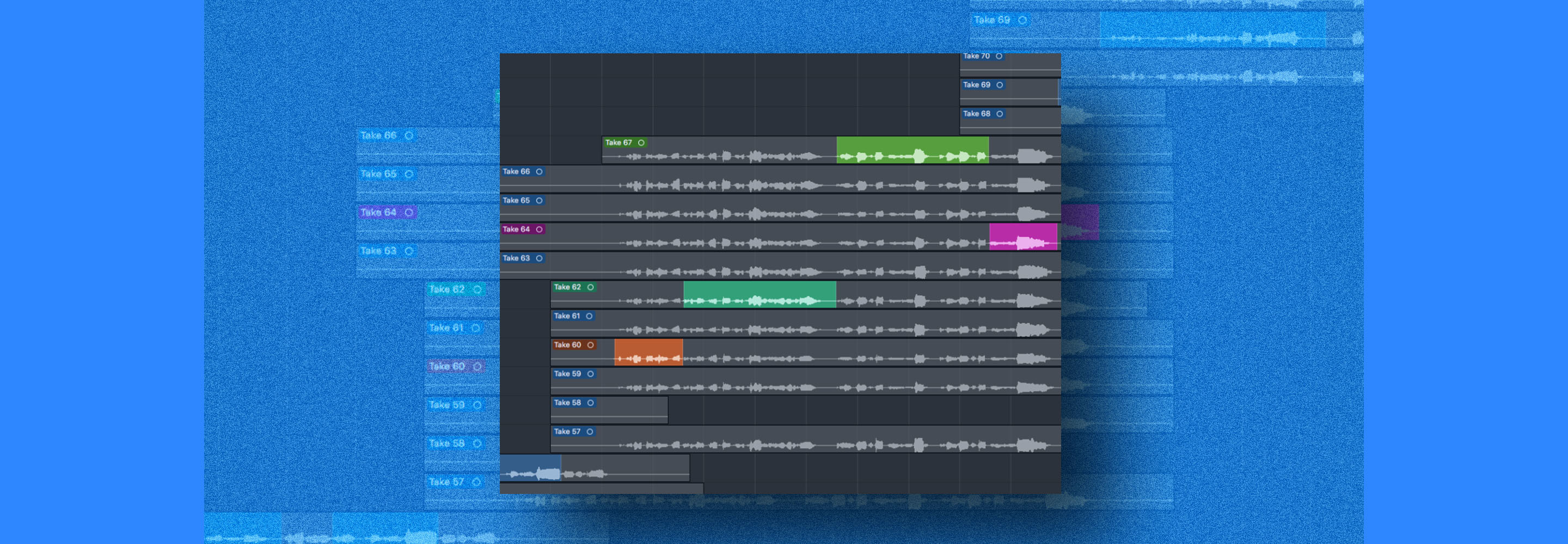
The fundamentals of vocal pitch correction
Pitch correction is a tool that even professional singers use. Learn the answers to some common pitch correction questions as well as how to use pitch correction on vocals.
Let’s say you’ve crafted your vocal chain and done some vocal recording. After selecting your favorite takes and comping together a vocal track, you’ve found that your vocals still aren’t sounding as polished as you’d like them to.
Enter pitch correction! Most singers these days (yes, even professional singers) use a bit of pitch correction whether it’s to subtly tune a sour note or as a creative effect, going full T-Pain on a track. But what is pitch correction and what should we listen for as we tune vocals? In this article, we’ll cover how to use vocal pitch correction and how to get creative with iZotope


Nectar 3 Plus
What is pitch correction?
Pitch correction is the process of fixing notes that are out of tune. This is done in a couple of different ways depending on the plugin, but most use one of two ways to correct pitch. The first way is to analyze the incoming pitch, determine if it is too low (flat) or too high (sharp), and automatically raise or lower the pitch to be centered on the correct note. This is how Autotune and Nectar 4 operate. This first way is more often a global effect, processing the entire track.
The second way to correct pitch is to use a plugin that lets you go note by note and adjust notes individually to your liking. This is how Melodyne operates. This second approach to pitch correction is a more fine-tuned (pun intended) process rather than a global effect.
The method you choose will ultimately depend on the singer’s performance and what you are trying to accomplish when you correct pitch. No matter your method, it’s helpful to know how pitch is measured. Pitch is measured in cents and semitones. A semitone is otherwise known as a half step, or two keys that are right next to each other on a piano. 100 cents makes up one semitone.
Ways to use pitch correction
People use pitch correction in all sorts of ways. Most of the time, you probably can’t even hear that it’s been used to fix a note or two in a performance. However, a lot of genres like pop and hip hop use heavy pitch correction as a vocal effect. You can also use pitch correction creatively by copying a vocal track, tuning one and leaving the other un-tuned, effectively creating a double track. Pitch correction can be used to quickly create vocal harmonies, as I’ll demonstrate. It can really run the gamut.
I also want to note, we are focusing on vocals in this tutorial because that is what people most often ask about; however, pitch correction can happen on other instruments as well. I’ve definitely tuned bass, horns, and strings using some of these methods. Most of these techniques will work for almost any monophonic source so feel free to give them a try on anything, even drum samples!
How to use pitch correction on vocals
Tuning vocals is one of the first steps in making your vocals sound professionally mixed. Typically you’ll want pitch correction to be the first insert on a track, before any EQ and compression. That’s because in some plugins like Melodyne for example, you’ll actually transfer your vocal track’s audio into the plugin. If you have any EQ or compression inserted on that track before the pitch correction, those effects will also be transferred into Melodyne. So, if you wanted to change your EQ or compression settings later on, you’d have to transfer the audio into Melodyne all over again, and then redo the pitch correction as well. Not very efficient.
Nectar does not operate like this so the order of plugins does not matter as much. However, I like to be able to EQ the tuned vocal, especially in creative applications, because the tuner can add its own EQ curve that I might need to mellow out to get it to work with my overall mix.
Melodyne essential and Nectar 4 are both part of Music Production Suite 6 but operate very differently. Let’s take a look at how to tune vocals using each method.
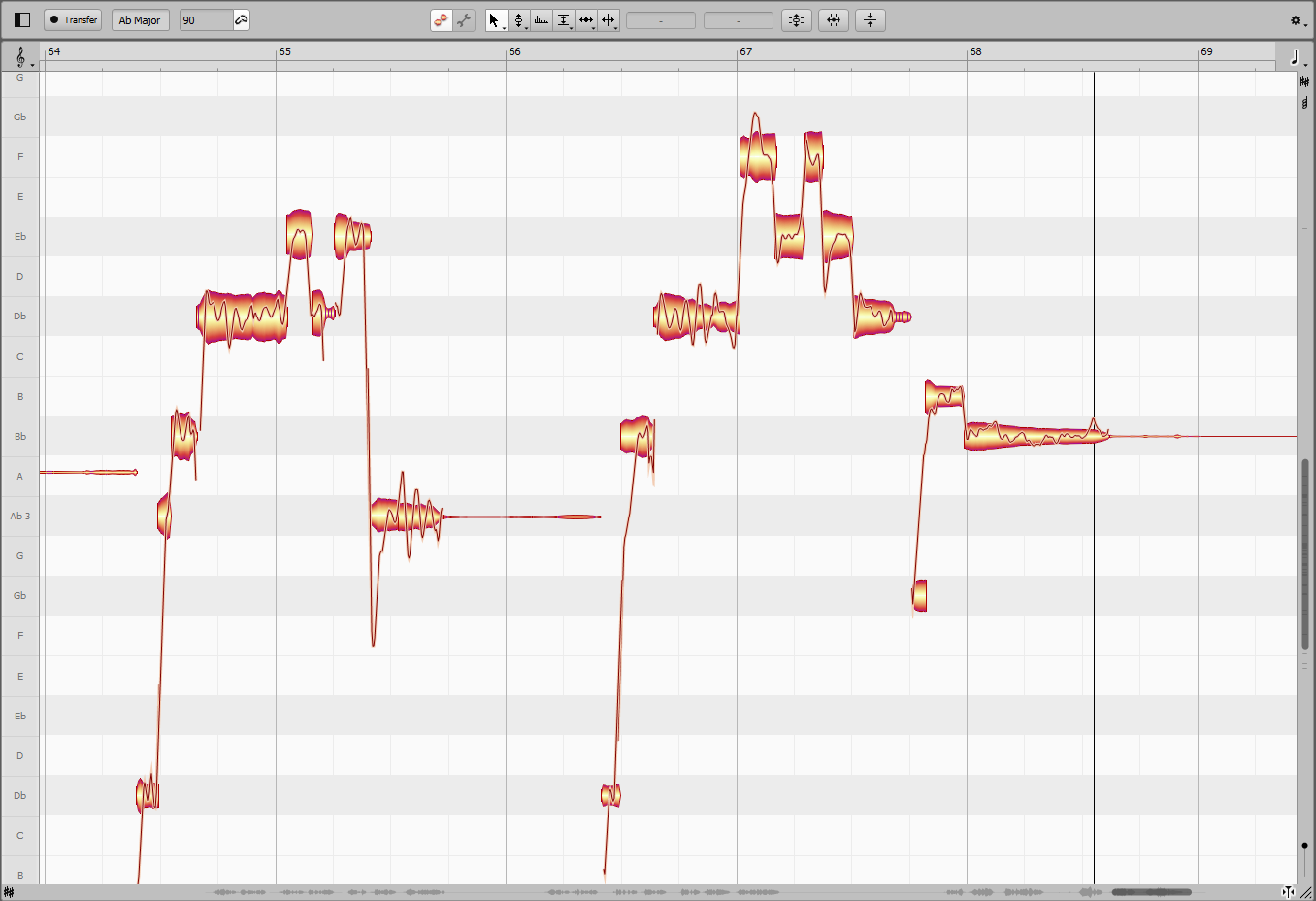
Melodyne allows you to “spot correct” pitchy notes on a vocal take
1. Subtle pitch correction on vocals
Subtle pitch correction usually means “transparent” pitch correction. We are looking to maybe tune a single note here and there or to gently nudge a very close vocal performance toward perfect pitch. In any case, the goal of subtle pitch correction is to not be able to hear that we have corrected the pitch. In this example, the lead vocals and stacked background vocals were all pretty close to the correct pitch, but just a couple of notes needed adjustment to polish up the performance.
Here, I used Melodyne to move the out of tune notes to the correct pitch on the staff.
Subtle pitch correction on vocals
2. Rigorous pitch correction on vocals
Subtle pitch correction has its purpose, but what if you’re going for a more pop sound? Most of what you hear on Top 40 radio stations has vocals 100% tuned and we can actually hear the pitch correction working. Automatic tuners like Nectar 4 or Autotune often have controls that allow you to dial in the speed of the retuning.
A slower speed means that the plugin takes longer to react to an incorrect pitch before it begins to correct it. A faster speed means that the plugin corrects the pitch almost immediately. In these audio examples, I’ve adjusted the speed of the pitch correction so you can hear how a higher speed sounds more processed.
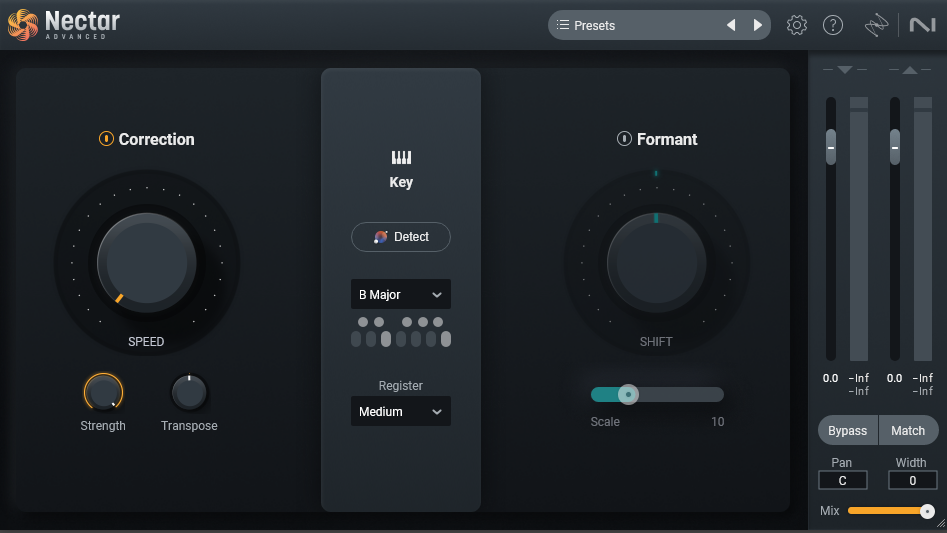
In Nectar 4, making the speed of pitch correction very fast gives us a pop vocal sound
Rigorous pitch correction on vocals
In addition to controlling the speed, you can also control the strength of the pitch correction. Turning the strength all the way up means that all notes are going to be tuned exactly to the notes of the key you specify, or you can let the tuner detect the key of the song for you. Lowering the strength will allow for some notes to be a few cents above or below the target pitch which sounds more natural.
3. Pitch correction a creative effect
Many artists today choose to use pitch correction as a creative effect during the production process. Cher and T-Pain were some of the first to popularize this use of pitch correction software. But, since its introduction into pop music with Cher’s “Believe,” countless artists across every genre have found new ways of creating interesting vocal effects using pitch correction. Check it out in action on “NDA” by Billie Eilish.
As you can see, this is where pitch correction can be both fun and functional. Tuners like Nectar 4 often include a formant control which processes the resonances of the vocal track and can give a vocal a deeper sound or a chipmunk sound without changing the pitch. This can make a vocal sound robotic which can be a cool effect in certain genres.
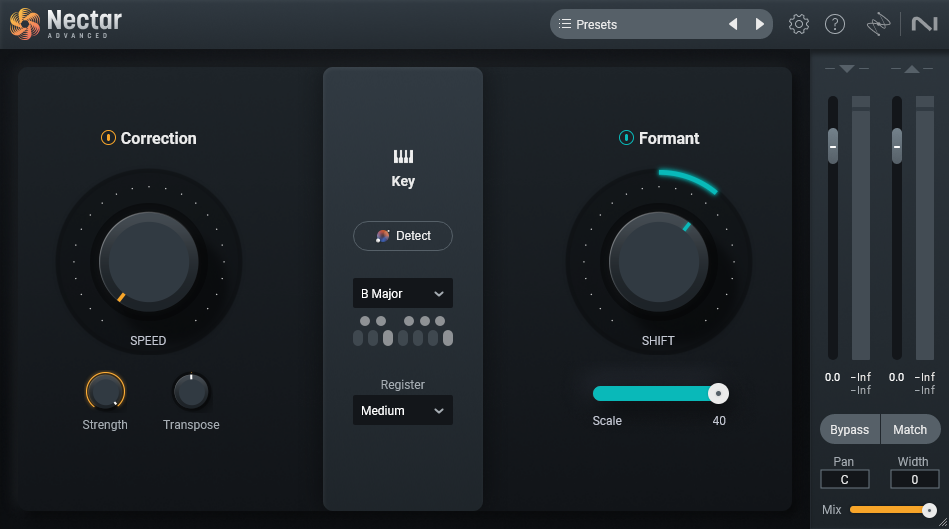
The Formant control in Nectar 4 is engaged, shifting the tone of the lead vocal
Pitch correction as a creative effect
4. Using pitch correction to add harmonies
You can also use pitch correction to add harmony parts to compliment the lead vocal. Duplicating the lead vocal, then pitching the duplicate up by 12 semitones or 1 octave adds height. Pitching the duplicate down an octave adds depth. In both cases, it can sound ethereal. You can then play with muting the harmony parts and unmuting them at key times to keep the song interesting.
In this example, I’ve tuned the lead vocal, duplicated the track, then pitched the duplicate track up by 5 semitones or a perfect fourth to add a harmony layer.
Adding vocal harmonies with pitch correction
Common questions about pitch correction
Is pitch correction the same as Auto-Tune?
In the same way we use “Band-Aid” to describe adhesive bandages or “Kleenex” to describe facial tissues, most people refer to pitch correction as “Auto-Tune,” even though it’s only one of many pitch correction softwares on the market. Auto-Tune was the first product of its kind to come along, so its name is somewhat stuck in the public mind.
But, since Auto-Tune’s original launch in 1997, many other pitch correction alternatives have popped up, each offering their own flavor and features. So to put it simply, “Auto-Tune” is a brand name, but “pitch correction” is the process.
Is it okay to use pitch correction?
Pitch correction is a useful tool in my music production toolbox that saves time, energy, money, and precious vocal cords.
Sure, there may be some that consider using pitch correction on vocals as “cheating.” But, that’s like telling a construction worker that using a drill instead of a screwdriver is cheating. Or telling an accountant that using formulas in spreadsheets is cheating. If you’re a vocalist, pitch correction software is just another tool of the trade.
The bottom line: there’s no shame in using pitch correction to help your art be the best it can be. Using pitch correction definitely has an undeserved stigma around it. But, the fact is that most vocalists use it (whether they like to admit it or not).
Do professional singers use pitch correction?
They most certainly do. Even the pros don't hit every note every time. And, although pitch correction got its start in pop music, it’s not just pop professionals that use it. From Katy Perry to Rascal Flatts, to Bon Iver and Kanye West, pitch correction transcends genres. Again, pitch correction is a tool to enhance the quality of the work. Professionals aren't afraid to use it. You shouldn’t be either.
Start using pitch correction in your mix
Pitch correction is a tool that even professional singers use so don’t be afraid to experiment with it on your vocals as well. We learned how it can be used in a functional way such as fine-tuning a performance, and in creative ways with formants and harmonies. Start by fixing any problem notes, then you can begin to add some style using pitch correction. For more creative ideas for using Nectar, check out How to Mix Vocals with Nectar Vocal Assistant and Vocal Mixing 101: Free Vocal Doubler Plug-in and Tips for Mixing Vocals.
You can get access to both Nectar and Melodyne essential in


Music Production Suite 7
